NASA Clears PVAMU Undergraduate Flight Team for Research
To Compare DNA Radiation Damage in Zero and Microgravity
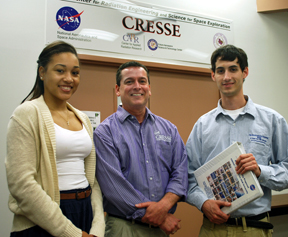
The same CRESSE team that added “moon mud” NASA’s space exploration vocabulary just over a year ago plans to turn the research spotlight on a group of Prairie View A&M University undergraduate students who are developing a “biology cannon” that will take aim at the question of whether x-rays are more harmful to human DNA in the zero gravity of outer space than they are when exposure takes place on earth.
The Rad-Panther team picked for the NASA Minority Innovation Challenges Institute (MICI) Reduced Gravity Student Flight Opportunities Program will travel to Johnson Space Center at Clear Lake in June for pre-flight examinations and evaluations. From there, they will move to nearby Ellington Air Force Base to assemble their experiment aboard NASA’s Weightless Wonder, a highly modified Boeing 727, and prepare for a series of roller coaster-like flights over the Gulf of Mexico that simulate zero gravity, 1/6g lunar gravity and 1/3g Martian gravity.
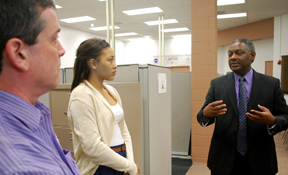 Dr. Brad (Buddy) Gersey, lead researcher with the NASA Center for Radiation Engineering and Science for Space Exploration (CRESSE) at Prairie View, said the focus of the experiment is to develop, build, test and fly a device capable of performing radiation biology exposures to human cell cultures during atmospheric or space flight missions.
Dr. Brad (Buddy) Gersey, lead researcher with the NASA Center for Radiation Engineering and Science for Space Exploration (CRESSE) at Prairie View, said the focus of the experiment is to develop, build, test and fly a device capable of performing radiation biology exposures to human cell cultures during atmospheric or space flight missions.
The five-member flight team will load their prototype cannon with both biological samples and an ultraviolet-C radioactive source into a sealed metal tube affixed with a shutter system to allow precise-time irradiation of samples only during the period when the flight parabolas are in a microgravity-producing trajectory. Another device called a Tissue Equivalent Proportional Counter (TEPC) will be flown alongside the cannon in order to quantify the ambient radiation dose and ensure such radiation is not large enough to confound experimental results.
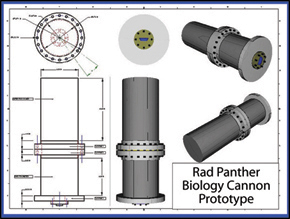 Undergraduate flight team members for the June 16-25 experiment are junior Jordan Fuchs, team lead, electrical engineering; senior Camille Smith, co-lead, chemical engineering; junior Melanie Price, electrical engineering; junior Demarcus Briers, biology; and junior Christopher St. Julian, electrical engineering.
Undergraduate flight team members for the June 16-25 experiment are junior Jordan Fuchs, team lead, electrical engineering; senior Camille Smith, co-lead, chemical engineering; junior Melanie Price, electrical engineering; junior Demarcus Briers, biology; and junior Christopher St. Julian, electrical engineering.
PVAMU is one of just 14 minority serving institutions and community colleges nationwide participating in the MICI reduced gravity project. CRESSE, a NASA University Research Center, is home to some of the nation’s leading radiation scientists.
“A secondary objective is to use lessons learned this summer to improve the prototype equipment and use the data obtained to design a subsequent study that will utilize cutting edge assays and a radiation source more similar to the space radiation environment,” said Dr. Richard Wilkins, Director of CRESSE.
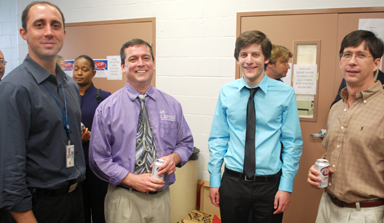 According to Gersey, a UV-C radiation source is very manageable from a health, safety and regulatory compliance standpoint and is perfect for this year’s experiment. Its radiation is energetic enough to produce strand breaks in DNA. The data should be useful to biological researchers and NASA in future spaceflight planning.
According to Gersey, a UV-C radiation source is very manageable from a health, safety and regulatory compliance standpoint and is perfect for this year’s experiment. Its radiation is energetic enough to produce strand breaks in DNA. The data should be useful to biological researchers and NASA in future spaceflight planning.
Gersey is hopeful that a more energetic radiation source can be placed on a future microgravity flight, perhaps as early as the summer of 2012.
“They make small x-ray machines that are about the size of a softball,” Gersey said. “These devices produce energetic photons, the equipment is light and portable, and they are truly fail safe devices since they have a simple off/on switch which stops the radiation. The whole thing would just be a pile of non-working parts if the device was dropped or fell out of the sky.”
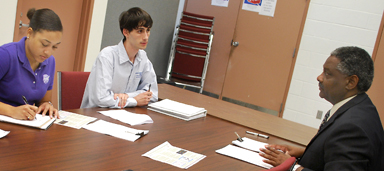 Gersey recently added a new element to the research when PVAMU Psychology Department graduate student Travis Wedeking volunteered his expertise in experimental social psychology to study the interactions of the flight crew. Wedeking wants to evaluate the crew’s dynamics and interactions, interdependence and synergy before, during and after the NASA flight to see if there are lessons to be learned from the stresses, mental gymnastics and physical demands of the project.
Gersey recently added a new element to the research when PVAMU Psychology Department graduate student Travis Wedeking volunteered his expertise in experimental social psychology to study the interactions of the flight crew. Wedeking wants to evaluate the crew’s dynamics and interactions, interdependence and synergy before, during and after the NASA flight to see if there are lessons to be learned from the stresses, mental gymnastics and physical demands of the project.
Gersey recalls a memorable moment in 2004 during another PVAMU team experiment aboard a NASA microgravity flight. A student became extremely upset after a fellow flyer, sickened by aircraft maneuvers, unintentionally vomited on him. “It seemed like an overreaction at the time,” Gersey said, “but I still have a photo of the victim standing there with clenched fist trying to control his anger in the airplane.”
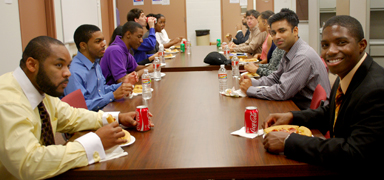 Researchers believe a psychological component added to the 2011 flight schedule may give NASA a different type of data to study, particularly as it relates to stress management issues for students and pre-astronauts. The study has the potential to shed new light on some elements of astronaut selection and training.
Researchers believe a psychological component added to the 2011 flight schedule may give NASA a different type of data to study, particularly as it relates to stress management issues for students and pre-astronauts. The study has the potential to shed new light on some elements of astronaut selection and training.
“NASA is very interested in the psychological profiles of its future flight crews, be they astronauts or students who hope one day to become astronauts,” Gersey explained. “We want to begin our investigation at the student level and expand outward from there. We hope to enrich the selection and training process in ways that will lead to better teamwork and personnel interactions for microgravity student flyers to follow.”
CRESSE Deputy Director, Dr. Kelvin Kirby, serves as the team’s lead faculty advisor and has outlined an extensive list of education and outreach components targeting K-12 students in NASA-backed activities that range from classroom visits to programs and demonstrations by the Rad-Panther team and others. The flyers will take the project’s pre-flight and post-flight story to middle and high schools in Bryan-College Station area as well as to members of the NASA Explorer Scout and Boy Scout Troop 60 in College Station. Framed photographs of the June flight will be presented to each school visited for display in science/mathematics classrooms. The Rad-Panthers will host special programs for 65 underrepresented, under served sixth and seventh graders during the 4th annual two-week Exxon Mobil Bernard Harris Summer Science Camp at PVAMU.
The Rad-Panthers also snared Dr. Honglu Wu, manager of the Radiation Biophysics Laboratory and the Core Bioanalytical Laboratory with the NASA Johnson Space Center’s Human Adaptation and Countermeasures Division as their technical advisor and mentor. Another NASA-JSC biologist, Corey Theriot, will serve as the team’s scientific liaison.
The new Rad-Panther website introducing the project and providing in-depth contact information is already online at www.radpanthers.org. A Facebook presence and ties to the CRESSE website at www.cresse-pvamu.com are forthcoming.
